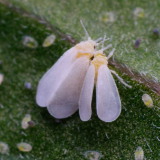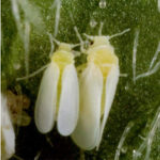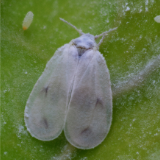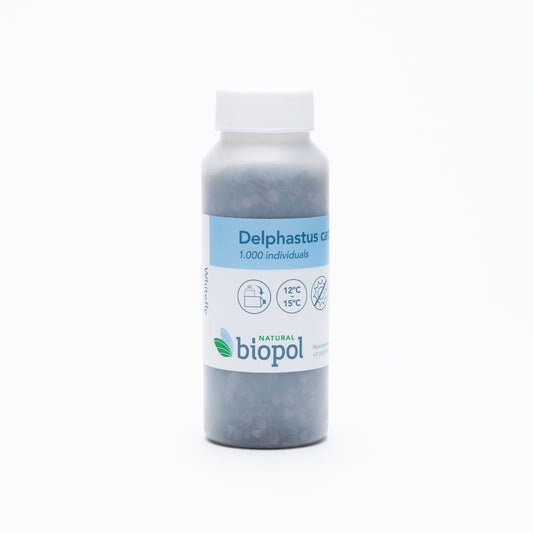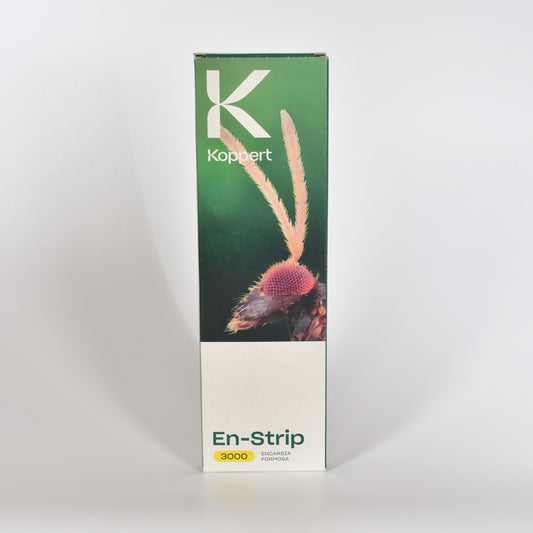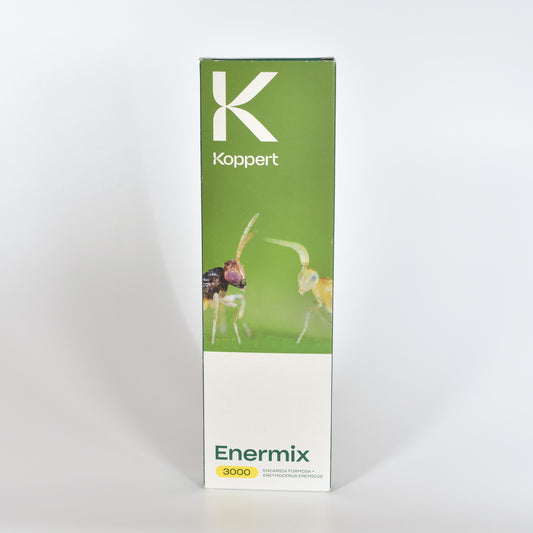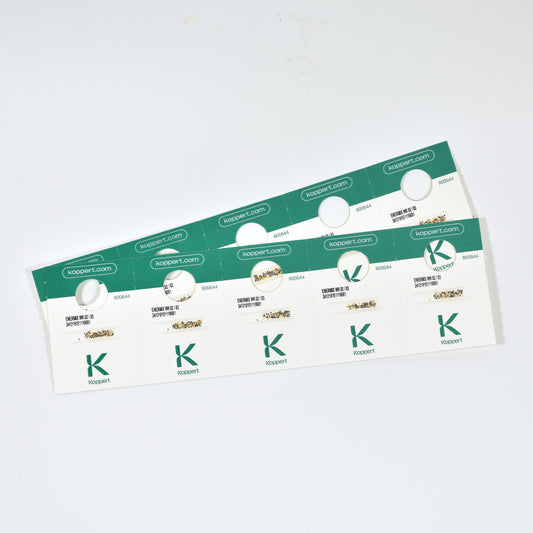
Common whitefly species
How to recognize whitefly
Despite their name, whiteflies are actually not flies. Instead, they belong to the group of true bugs, like aphids, mealy bugs and scale insects. Adults are 2-3 mm, have wings and have the ability to fly. Only early stage larvae have legs and are mobile. The younger stages usually settle on the underside of the leaf. The larvae are oval-shaped and translucent white to yellow. The last larval stage is a cocoon, which looks like a little box on the leaves. Adult whiteflies will emerge through a T-shaped tear in the cocoon.
With their specially adapted mouth whiteflies puncture the phloem vessels of plants. Because of the high pressure in the phloem vessels plant saps will stream in and lead to an overdose of sugar, which whiteflies excrete in the form of honeydew.
Whitefly damage
Whitefly is a big problem in greenhouse crops. Serious infestations can cause a big swarm of whiteflies when touched. Whiteflies, and the larvae in particular, feedon plant saps and excrete the surplus of sugars as honeydew. Honeydew will make the plants sticky. In addition, honeydew can act as a growth medium for black sooty mold fungus which will turn the leaves black andhamper photosynthesis. Whiteflies are also known as important virus transmitters.

Eggs and pupea of Greenhouse whitefly
Biological control of whitefly
-
Delphastus Agriprotect - 1000
-
EN-STRIP - 15.000
-
EN-STRIP - 3000
-
EN-STRIP - 600
Vendor:KoppertRegular price €18,21 EURRegular priceUnit price / per€18,21 EURSale price €18,21 EUR -
ENERMIX - 15.000
-
ENERMIX - 3000
-
ENERMIX - 600
Vendor:KoppertRegular price €17,35 EURRegular priceUnit price / per€17,35 EURSale price €17,35 EUR -
ENTOFOOD - 10

